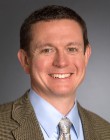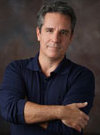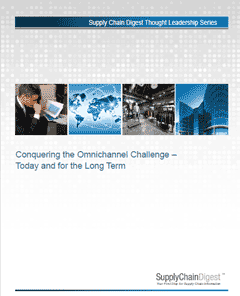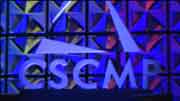 |
October 2, 2015 - Supply Chain Flagship Newsletter |
 |
| FEATURED SPONSOR: MSU |
||
 |
||
 |
|
||||||||||||||||||||||||||||||||||||||||||||||||||||||||||||||||||||||||||||||||||||||||||||||||||||||||||||||
The number I heard was about 2900 attendees, which I think would be up a bit from last year. Attendance has been somewhere in that just under 3000 range for some time. Can it ever be taken back North again? That is a key organizational question for CSCMP. I believe so, but it will take hard and smart work. From a big picture perspective, there were just 16 breakout session tracks this year, down from I believe 20 last year, 26 in 2013 and in the 30s not too many years ago. Clearly in years past there were far too many tracks to sort through, and not enough coordination across the track in terms of subject matter. So I fully support the overall move to consolidate the number of tracks, but believe the pendulum may have swung a little too far this year. I wanted a few more choices in many of the time slots.
There is also clearly a stronger CSCMP focus on engaging young supply chain professionals, starting in college and then in say the first decade of their careers. I think this is a simple strategy of connecting with the next generation early and hoping to hold on to them for life, which seems smart enough to me. There were a lot of young people there, and CSCMP picks up most of the tab for many of them.
He is an interesting and engaging guy, and believes deeply that "culture trumps strategy," because the best strategy will usually fail in execution if the culture is off. Schultz offered a lot to to think about for sure, but I always think its a bit easier to be a social enterprise when you can get six bucks for a cup of coffee than when you are grinding it out in a hugely competitive market. Maybe the message is that you can culture your way out of that position.
On Tuesday, Dave Clark, SVP of Operations for Amazon.com, opened the window a bit on how now giant Amazon can be so innovative and entrepreneurial even with its now giant size. The easy answer is again culture. When a new idea is proposed, the Amazon champion writes a six-page "customer back" document, which must contain an "internal press release" as if the innovation was being announced within the company.
The meeting on the idea starts off with execs and managers reading that document. Once the idea is approved, it's off to the races, with an amazing focus on speed. For example, Clark said it only took 111 days to go from idea approval for the Amazon Now one hour delivery service to being live in Manhattan (including finding and renovating warehouse space, stocking 25,000 SKUs, setting up delivery processes, installing a lite WMS, building the web and mobile apps, etc.).
Incredible. The goal was actually only 90 days. It then set up 13 Amazon Now cities in one year, with more rolling out. Clark also announced the new Amazon Flex program, which is basically an Uber-like service which will use freelance drivers who sign up and get delivery work through a mobile app, and they can make about $25 per hour. The key to me is that perhaps Amazon alone has the order density to make this payoff for itself and the drivers. Clark also on the spot donated on behalf of Amazon $25,000 to the American Logistics Aid Network, and said he would match another $25,000 if CSCMP members would pledge an equal amount. They did and he did.
Robert Martichenko, CEO of LeanCor, a Lean consulting company, was presented the CSCMP Distinguished Service Award, and gave one of the best acceptance speeches ever, including videos of his mid-teenage daughters first saying they had no idea what their Dad did for a living, and then that they had zero interest in a supply chain career. I am so glad I am not alone. |
|||||||||||||||||||||||||||||||||||||||||||||||||||||||||||||||||||||||||||||||||||||||||||||||||||||||||||||||
|
|||||||||||||||||||||||||||||||||||||||||||||||||||||||||||||||||||||||||||||||||||||||||||||||||||||||||||||||
|
|||||||||||||||||||||||||||||||||||||||||||||||||||||||||||||||||||||||||||||||||||||||||||||||||||||||||||||||
|
|
|
YOUR FEEDBACK
We received quite a bit of Feedback on last week's First Thoughts column on "The Supply Chain Efficient Frontier," in addition to the great email from Tom Davis featured above. Below are some additional Feedbacks. More next week.
Feedback on the Efficient Supply Chain Frontier
I don't really care if I get mentioned personally, but I did the first off the self commercial work on supply chain trade off curves when I was a scientist/programmer for IBM. I ended up applying for a patent with them, and won an award for it. The patent application covered graphical interaction with trade off curves in a general way that didn't mention supply chain in particular. I'm not sure if IBM followed through in terms of actually acquiring the patent. (I no longer work for IBM). But if they did, I have a good understanding of what it does and doesn't cover. I also published some algorithmic ideas with IBM that are in the public domain. It's worth pointing out that computing a trade off curve for a reasonably sized optimization problem is more "parallelizable" than computing a single optimal result for a really hard optimization problem. That is to say, if your optimization problem is really hard, then adding 100 computers to work on it parallel will be unlikely to give you a 100X (or even a 10X) speed up. But if you're optimization problem doesn't take that long to solve in one instance, and you need to solve 100 somewhat similar instances in order to compute a trade off curve, then 100 machines might actually get you (almost) a 100X improvement (and even more likely a 10X improvement). As we move into a cloud computing world, where 100 computers are not terribly hard to rent, this observation becomes more prescient. Hopefully, when combined with articles like this, it will result in trade off curves becoming a more common part of data analysis in general, and supply chain analysis in particular. Peter Cacioppi
|
||
Nice Article. We would like to understand how these curves are drawn and how we can understand them better. |
||
GREAT SUMMARY! One of Sean's last points was interesting. It leads to the question "Are we working on the right projects - the ones that will actually move the dot in the right direction?" But that’s another story. Bill Pritz
|
||
SUPPLY CHAIN TRIVIA ANSWER
Q: What is a transhumanist?
A: Someone who believes the idea that human capacity can be enhanced by technology – like implanting RFID chips in your hand to control objects.
| © SupplyChainDigest™ 2003-2015. All Rights Reserved. SupplyChainDigest PO Box 714 Springboro, Ohio 45066 |
POWERED BY: XDIMENSION
|










